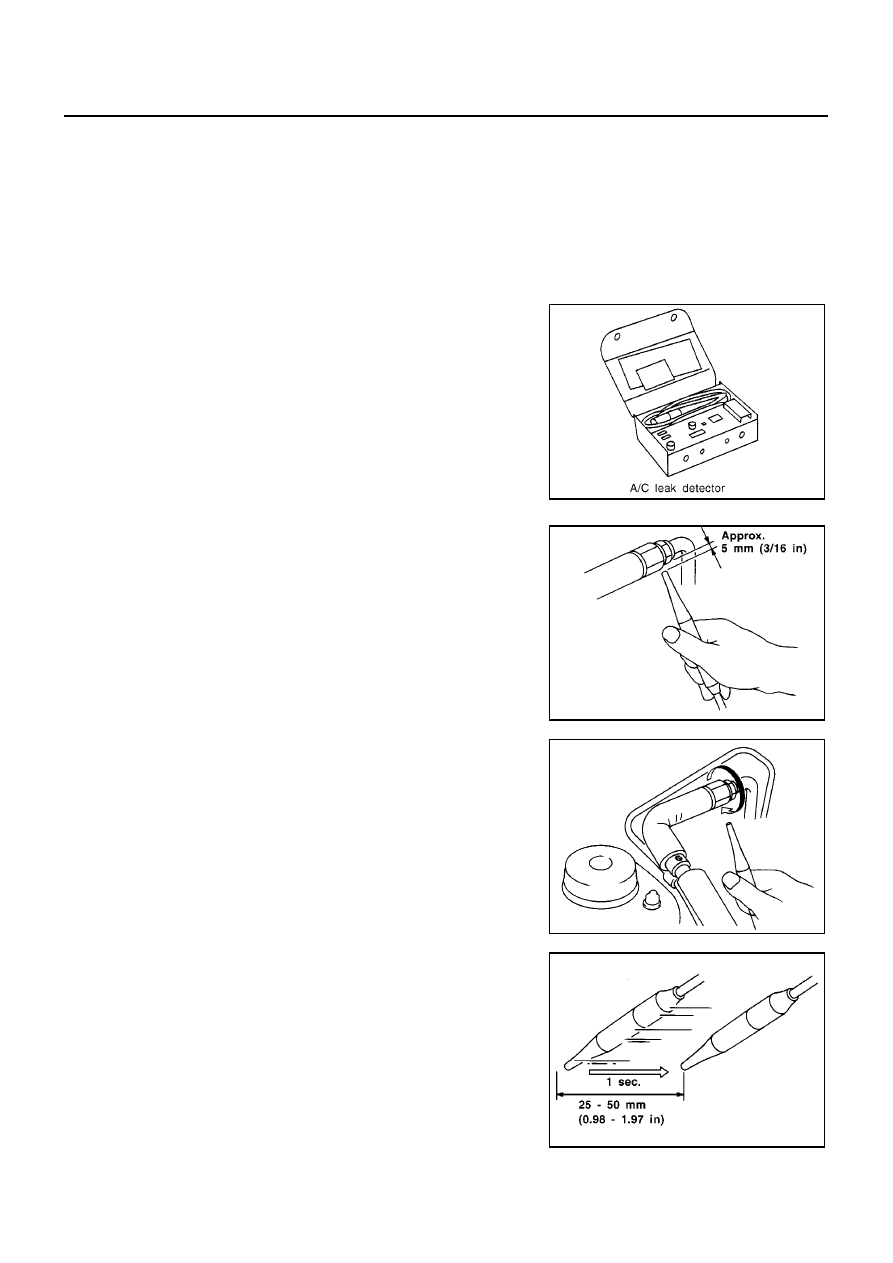Nissan Almera Tino V10. Manual - part 237

ATC-144
REFRIGERANT LINES
6.
With the engine still running, disconnect the injector tool from the service fitting.
CAUTION:
Be careful the A/C system or replacing a component, pour the dye directly into the open system con-
nection and proceed with the service procedures.
7.
Operate the A/C system for a minimum of 20 minutes to mix the dye with the system oil. Depending on the
leak size, operating conditions and location of the leak, it may take from minutes to days for the dye to
penetrate a leak and become visible.
Electronic Refrigerant Leak Detector
EJS0031P
PRECAUTIONS FOR HANDLING LEAK DETECTOR
When performing a refrigerant leak check, use an A/C leak detector
or equivalent. Ensure that the instrument is calibrated and set prop-
erly per the operating instructions.
The leak detector is a delicate device. In order to use the leak detec-
tor properly, read the operating instructions and perform any speci-
fied maintenance.
1.
Position probe approximately 5 mm (3/16 in) away from point to
be checked.
2.
When testing, circle each fitting completely with probe.
3.
Move probe along component approximately 25 to 50 mm (1 to
2 in)/sec.
SHA705EB
SHA707EA
SHA706E
SHA708E